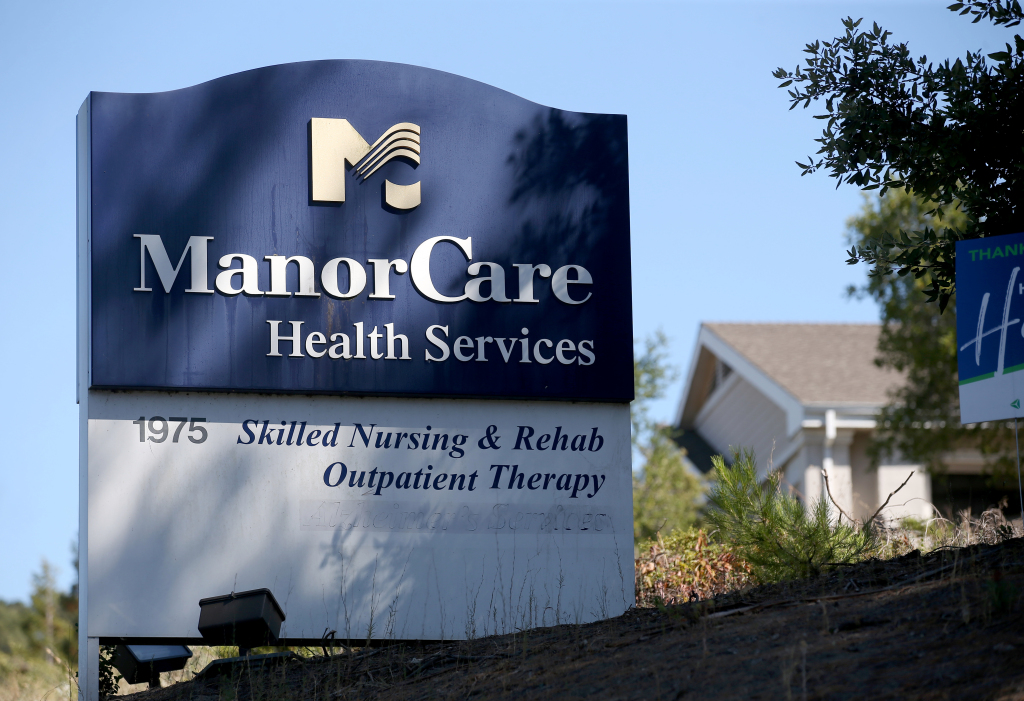After outbreaks have swept through nursing homes in Walnut Creek and Concord, the death toll in long-term care facilities is rising, accounting for 70 percent of Contra Costa County’s COVID-19-related deaths, according to infomation published by the county health department.
In Walnut Creek, 12 patients are dead after a COVID-19 outbreak hit the Manor Care Health Services – Tice Valley nursing home, infecting a total of 92 patients and 38 healthcare workers at the facility, according to state health department data published this week. Twenty-five patients are still battling COVID-19 at the nursing facility, according to the state’s information.
After an outbreak infected 65 patients and 17 workers at Concord’s San Miguel Villa nursing facility, 20 patients have died and at least one healthcare worker has died, according to the state’s information, which also states that nobody at that facility is currently still infected with COVID-19. The state does not specify the number of deaths if it is 10 or less.
According to Contra Costa Health Services, 71 of the 102 COVID-19 deaths have been at long-term care facilities.
Those nursing facility deaths add to the statewide death toll across California skilled nursing facilities that has reached 3,013 patients and 113 health care workers, according to the state. At least 17,162 patients and 12,202 health care workers have tested positive for COVID-19 over the course of the pandemic. Among residential care facilities for the elderly — commonly called assisted living facilities — another 5,215 residents and staff have contracted COVID-19 and at least 553 of them have died.
Months into the pandemic — well after nursing facilities were instructed by health officials in March to lock down facilities to visitors and stop all group activities — nursing home and assisted living facility residents continue to get sick.
That’s because as COVID-19 spreads in the general population, healthcare workers are more likely to carry the virus — often asymptomatically — into the nursing facilities where they work, said Charlene Harrington, a professor and researcher at UCSF’s school of nursing.
“If nursing homes aren’t doing enough testing and frequently enough, they won’t pick up the asymptomatic people,” Harrington said. “So the key question is, how many of the nursing homes are actually doing the testing?”
A spokeswoman for ManorCare Health Services said testing of the entire Tice Valley facility had been completed, along with measures to mitigate the outbreak, including “increased” sanitization procedures and symptom and temperature checks, among other protocols suggested by health officials.
Contra Costa County issued a health order at the end of May requiring baseline testing of all residents and staff of a nursing home or other residential care facility. For those with positive cases, staff must be tested weekly until there are no new cases, but after that, a facility “may resume its regular surveillance testing schedule.” Though it’s unclear how many facilities have their own regular testing schedules, if any.
Statewide, the California Department of Public Health has issued guidance for testing, but ultimately has left the implementation of testing up to facilities to coordinate with local health departments. There is also the issue of protective equipment such as masks, gloves and other gear for healthcare workers, which nursing facilities and assisted living communities struggled to get enough of in the early days of the pandemic. Skilled nursing facilities have been asked to report their levels of personal protective equipment to federal and state health officials, as well as their staffing levels.
But, Harrington said, there is still little transparency around whether facilities have adequate supplies, staffing or testing, and there is little accountability.
“There is no penalty for not reporting, for a shortage of staff, for not doing testing,” she explained. While many nursing homes are being “extremely careful,” she added, it’s entirely up to the facility ownership and management to protect their staff and residents.
Adding to the lack of transparency is the fact that facilities shut down to visitors — and to ombudsmen, the advocates who support residents — months ago to stem the risk of the virus spreading. Advocates of patients have called on the state to loosen the rules to allow family members or designated visitors into facilities for both social support and to check on conditions.
The state earlier this month revised some visitation rules. According to both state and federal guidelines, facilities with no COVID-19 outbreak must permit outdoor visitation, and facilities must allow indoor visitation only if a facility has no COVID-19 outbreak, there is a decline in cases in the community, there is no staffing shortage, and there is an approved testing plan and mitigation plan. But local health departments can also enact stricter rules on visitation.
As long as cases continue to rise in the communities, though, it is unlikely nursing facilities or assisted living facilities will be able to allow visitation or stem their outbreaks.
“As long as we have the spread out in the community,” Harrington said, it will affect nursing home patients.



















